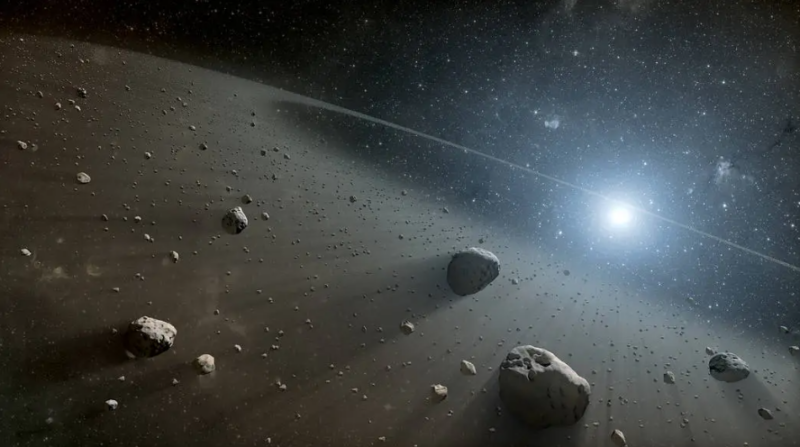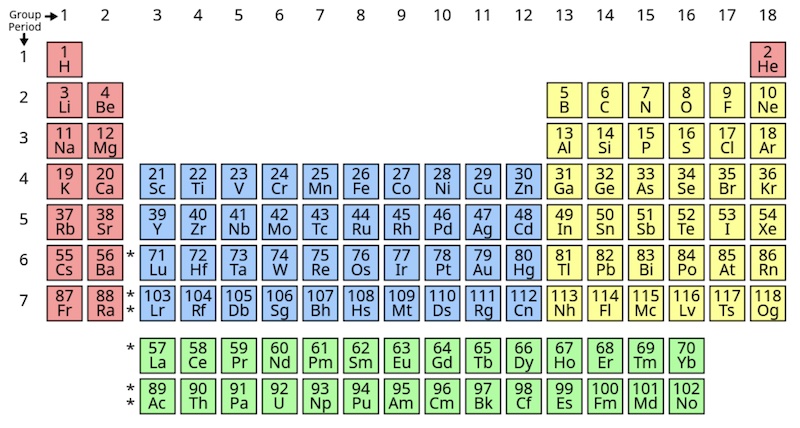
Ultradense asteroids are superheavy
Asteroid 33 Polyhymnia is what’s called a main belt asteroid. It orbits our sun between the planets Mars and Jupiter. Scientists have found that the density of this asteroid is far greater than that of conventional matter. In other words, there’s nothing on Earth that compares with this asteroid’s ultradensity. So some scientists think Polyhymnia and asteroids like it might consist of superheavy elements. Those are elements that are off the charts of the periodic table. On October 9, 2023, a press release from the science publisher Springer said that asteroids like Polyhymnia might be:
… composed of unknown types of ‘ultradense’ matter that cannot be studied by conventional physics.
Superheavy! Cool …
Superheavy asteroids = CUDOs
Johann (Jan) Rafelski of the University of Arizona and two of his student co-workers based their new study on the idea of what they call CUDOs, or compact ultradense objects. These CUDOs are astronomical bodies with a mass density greater than that of osmium. Osmium, with the atomic number 76, is the densest naturally occurring element on Earth. There are higher atomic numbered elements on Earth, they’re just less dense than osmium. The highest-numbered element ever synthesized in a lab is oganesson, topping the periodic table of the elements with atomic number 118.
Rafelski and colleagues propose that asteroid Polyhymnia and those like it may be composed of elements greater than atomic number 118. These are elements no one has ever observed before.
The European Physical Journal Plus accepted the researchers’ peer-reviewed paper for publication on September 7, 2023.
The 2024 lunar calendars are here! Best Christmas gifts in the universe! Check ’em out here.

Elements off the chart, but stable?
Physicists had already proposed what they call an island of nuclear stability of elements with atomic numbers around 164. Rafelski and team concentrated their new study around this island and included more exotic types of ultra-dense material.
By definition, superheavy elements are those with an atomic number greater than 104. Elements with atomic numbers of 105 to 118 have only been made experimentally and are unstable. Elements above atomic number 118 are only in the realm of theory. But, in general, the density of the elements rises as you go further down the chart, so scientists expect superheavy elements to be extremely dense.
Remember osmium, the densest stable element on the period table? Osmium has a density of 22.59 grams per centimeter cubed (g/cm3). Scientists think Polyhymnia has a density of around 75 g/cm3. So the team was looking for stable, superheavy, ultradense elements that could explain Polyhymnia’s suspected composition.
Their calculations confirmed the prediction that atoms with around 164 protons in their nuclei (elements with atomic numbers of around 164) were likely to be stable. They also found that a stable element with atomic number 164 would have a density between 36.0 and 68.4 g/cm3. While not a slam dunk, the range does approach the suspected density of Polyhymnia.
A target for future miners?
If some asteroids in the asteroid belt really do contain elements that are unobtainable on Earth, they could be a future target for mining missions. Rafelski said:
All superheavy elements – those that are highly unstable as well as those that are simply unobserved – have been lumped together as ‘unobtainium’. The idea that some of these might be stable enough to be obtained from within our solar system is an exciting one.
Bottom line: A new study calculated that superheavy elements never seen on Earth could exist in asteroids in our asteroid belt.











